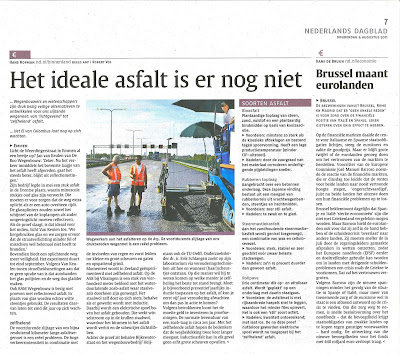The set up used for these tests is given below.
The test procedure consists of breaking the notched beam on the elastic foundation, heating the fractured beam, resting the heated beam for 6 hours and finally breaking the healed beam again.
The healing index is defined as the original strength divided by the healed strength).
 |
The fractured beam showing the two fracture surfaces at the location of the notch is given below.
Next figure shows typical loading curves of original beam and healed beam (different heating temperatures)
The strength recovery ratios are presenteed in the next figure.
The fractured beam cannot heal the crack by itself at 5°C and 20 °C: the crack is too big to be healed by natural healing. Induction heating can heal the crack and the extent of healing depends on the heating temperature. The optimal heating temperature is 85°C to obtain highest strength recovery. Further heating causes binder drainage and swelling problems, which offsets the healing benefit.



































